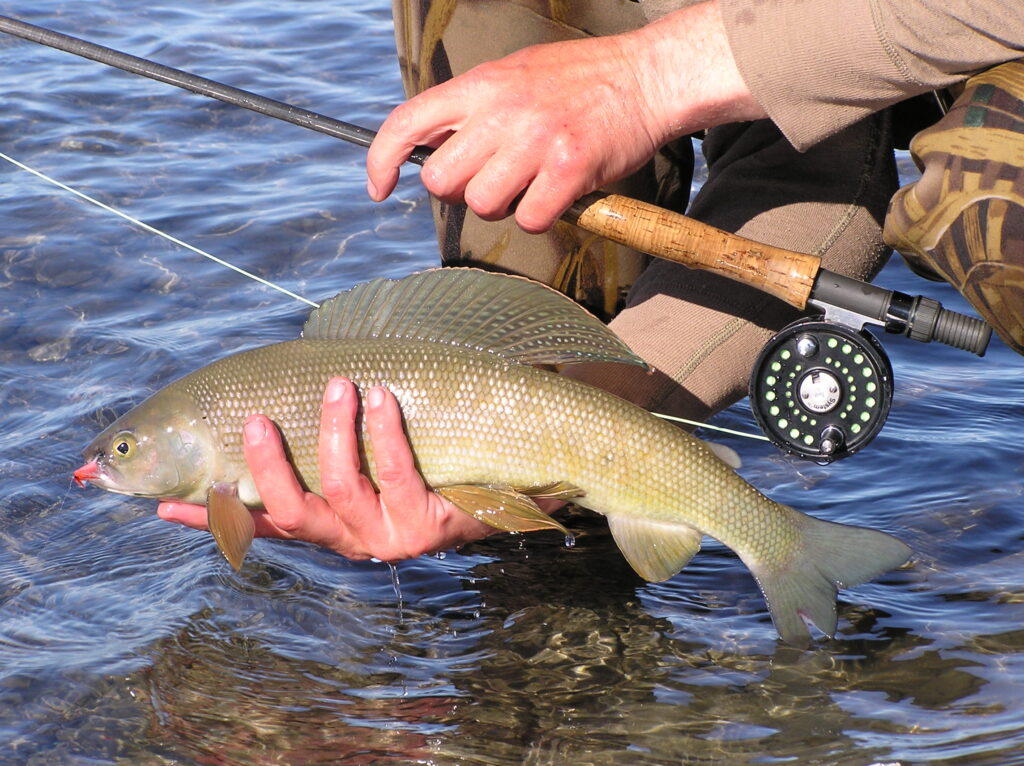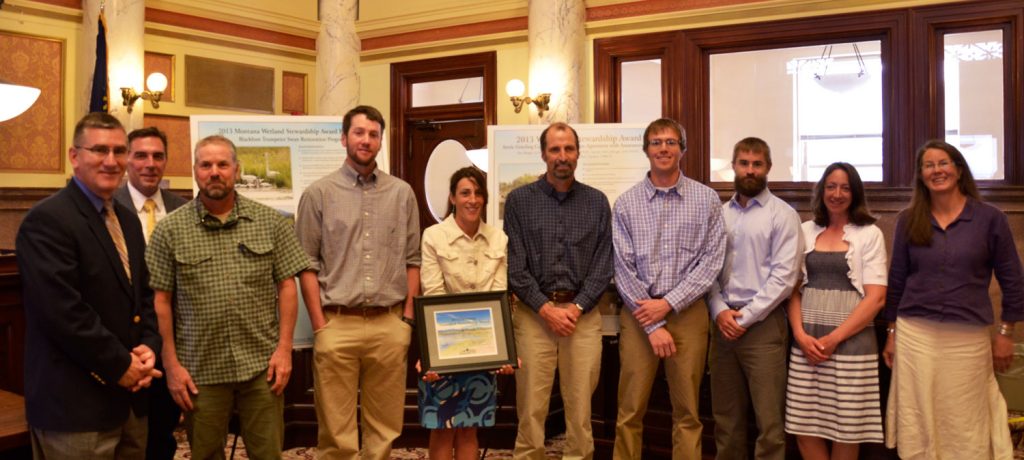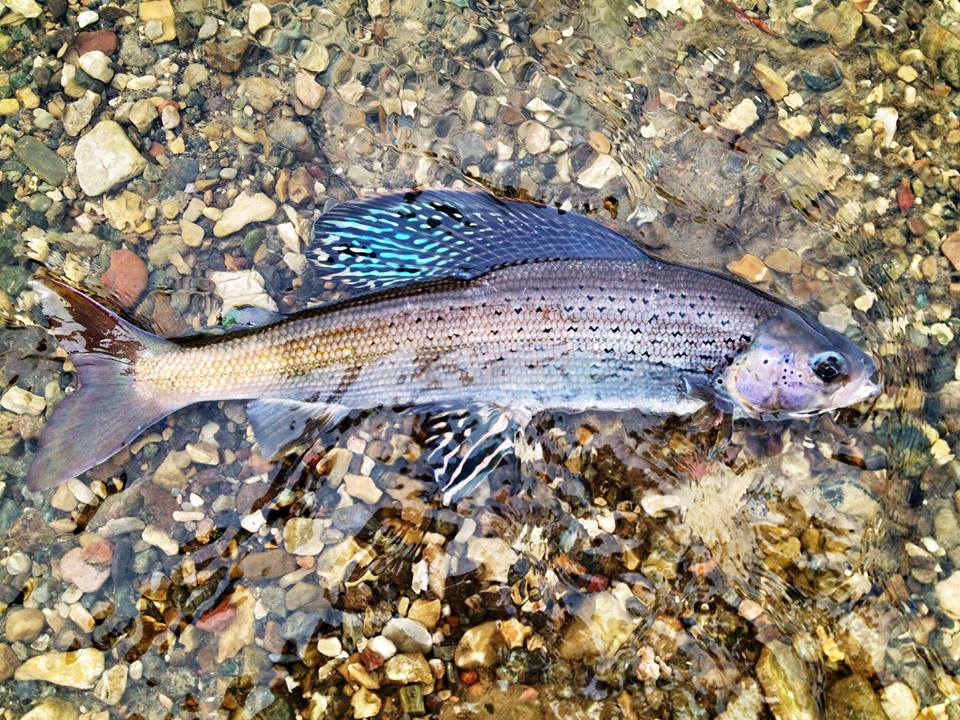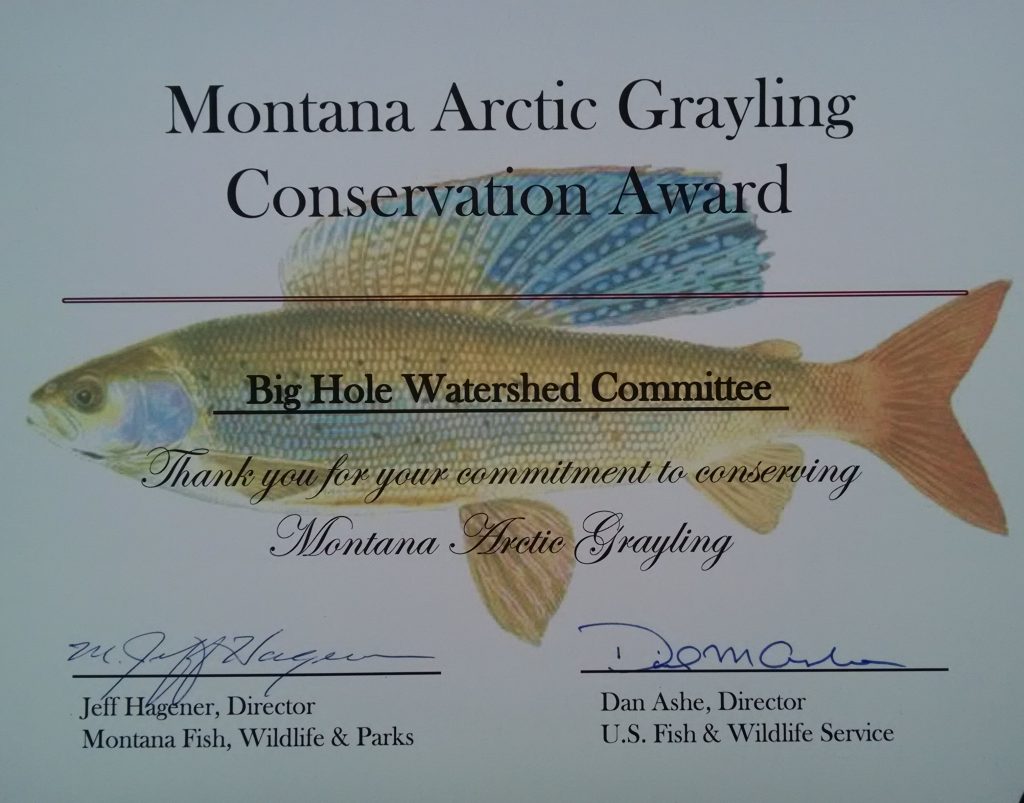Projects
Drought Management Plan & Grayling Recovery

The Big Hole River Drought Management Plan designates target river flow and temperature conditions for fish health in five river sections of the Big Hole River. The plan includes voluntary conservation targets for all water users, MFWP fishing restriction criteria, and information tools. Conservation actions are designed to support the health of the fishery.
The plan outlines voluntary conservation actions and relies on Shared Sacrifice, Shared Success – if all users sacrifice, we can all be successful in protecting the fishery. The plan also designates MFWP fishing restrictions when drought conditions reach critical levels.
The BHWC DMP originated in 1997. The plan is reviewed annually by a committee made up of irrigators, fishermen, conservation groups, and agency representatives as well as the entire BHWC.
Click here for more information on the Drought Management Plan and current river conditions.
Arctic Grayling Recovery & the Upper Big Hole CCAA
The Upper Big Hole River is home to the native Arctic grayling. The Upper Big Hole was the last location in the lower 48 states to host a naturally producing population of Arctic grayling in a river. Grayling historically occupied much of the Upper Missouri to Great Falls, Montana. Changes in habitat resulting from development, large dams, and mining beginning in the late 1880s caused the fish to decline dramatically. In the Big Hole, their decline was exacerbated by drought in the 1980s causing the fish to drop to dangerously low populations.
In 2009, Montana Fish, Wildlife and Parks, in partnership with United States Fish and Wildlife Service (USFWS), Montana Department of Natural Resources and Conservation (DNRC), and the Natural Resources Conservation Service (NRCS) established the Candidate Conservation Agreement with Assurances (CCAA) program. This put into place a strategic plan for recovering the Big Hole River Arctic grayling as well as providing legal protections for landowners who enroll and participate in the CCAA. The CCAA was a necessary step in recovering the Arctic grayling in the Big Hole because grayling live 90% on private lands, rendering private landowner cooperation absolutely essential.
Each landowner enrolled in the CCAA program signs on to a site-specific plan for their property developed by Montana Fish, Wildlife and Parks and the landowner that needs to be followed in order to receive legal protection. Plans are extensive and typically include a task list for riparian management plans, riparian and vegetation recovery, weed treatment, irrigation improvement, fish passage, and flow maintenance plans. Each landowner plan is monitored and results are reported annually.
The CCAA program is a 20-year agreement and was put in place as a result of the USFWS investigation of the Arctic grayling as a Candidate for Endangered Species listing, to which the fish was added as a candidate in 1991.
Management & Oversight
The CCAA is managed by a team of committed agency personnel with Montana Fish, Wildlife and Parks, the US Fish and Wildlife Service, Montana Department of Natural Resources and Conservation, and the Natural Resources Conservation Service. BHWC provides support for the CCAA whenever possible, including hosting a CCAA update each year at one of our monthly public meetings.
Project Results
2022 – October 24: Conservation groups announced intent to sue the USFWS if the agency fails to reconsider within 60 days its past denial of Endangered Species Act protections for the Arctic grayling.
2020 – Arctic grayling were again deemed not warranted for Endangered Species Act listing. Read more here.
2019 – The CCAA program has made impressive improvements since its inception. As of 2019, 32 landowners have been enrolled, representing 148,326 private land acres that include 214 miles of stream or river. CCAA personnel maintain that the most important factor in Arctic grayling recovery is the people – the folks who are employed to work on the recovery, the representatives of those who believe in the recovery, and most importantly – the landowners.
2015 – Not everyone agrees with the USFWS decision. In 2015, a lawsuit was filed suing the USFWS, disagreeing with their decision to not list the fish under the Endangered Species Act, the outcome of which has not yet been resolved.
2014 – Citing the extensive efforts and improvements for conservation specifically targeting the Arctic grayling as well as increasing populations, the USFWS determined in 2014 that the Artic grayling was not warranted as a candidate for Endangered Species Act listing. The announcement was made on August 19, 2014.
People & Organizations Involved
Montana Fish, Wildlife and Parks
Montana Department of Natural Resources and Conservation
United States Fish and Wildlife Service – Montana Partners for Fish and Wildlife
Project Documents & Resources
Big Hole River Drought Management Plan, Version 2023
Big Hole River Current Conditions
Big Hole River Drought Resiliency Plan
Arctic Grayling Recovery Information (MFWP)
Media Coverage
Montana Standard: Conservation groups threaten lawsuit over Big Hole grayling status (2022)
Montana Standard: Guest view: A culture of collaborative conservation (2021)
Dillon Tribune: Big Hole Cooperative Averts Grayling Listing (2020)
Project Photos




Project MAP
Status
Ongoing
Type
Resource Management/Planning
